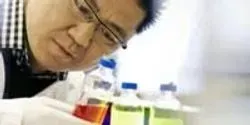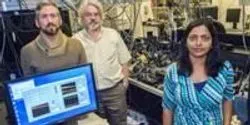Materials Science

University of Idaho professor’s project turns cow manure into biodegradable plastic.

Nearly 30 years after the discovery of high-temperature superconductivity, many questions remain, but an Oak Ridge National Laboratory team is providing insight that could lead to better superconductors.

Piezoelectrics—materials that can change mechanical stress to electricity and back again—are everywhere in modern life. Computer hard drives. Loud speakers. Medical ultrasound. Sonar. Though piezoelectrics are a widely used technology, there are major gaps in our understanding of how they work.

A team of researchers at the University of Toronto has discovered a method of assembling “building blocks” of gold nanoparticles as the vehicle to deliver cancer medications or cancer-identifying markers directly into cancerous tumors.

The Clemson University technology that could power industrial tools, run consumer electronics and help reduce carbon emissions starts with building blocks that are about 10,000 times smaller than the diameter of a human hair.

The Graphene Research Centre (GRC) at the National University of Singapore (NUS) Faculty of Science and the world’s leading chemical company BASF have partnered to develop the use of graphene in organic electronic devices, such as organic light emitting diodes (OLED). The goal of this collaboration is to interface graphene films with organic electronic materials for the creation of more efficient and more flexible lighting devices.















